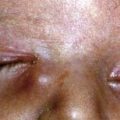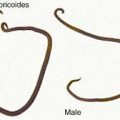Chapter 267 Polyomaviruses
Allander T, Andreasson K, Gupta S, et al. Identification of a third human polyomavirus. J Virol. 2007;81:4130-4136.
Egli A, Infanti L, Dumoulin A, et al. Prevalence of polyomavirus BK and JC infection and replication in 400 healthy blood donors. J Infect Dis. 2009;199:837-846.
Feng H, Shuda M, Chang Y, et al. Clonal integration of a polyomavirus in human Merkel cell carcinoma. Science. 2008;319:1096-1100.
Gaynor AM, Nissen MD, Whiley DM, et al. Identification of a novel polyomavirus from patients with acute respiratory tract infections. PloS Pathog. 2007;3:e64.
Hirsch HH, Knowles S, Dickenmann M, et al. Prospective study of polyomavirus type BK replication and nephropathy in renal–transplant recipients. N Engl J Med. 2002;347:488-496.
Lam WY, Leung BW, Chu IM, et al. Survey for the presence of BK, JC, KI, WU and Merkel cell polyomaviruses in human brain tissues. J Clin Virol. 2010;48:11-14.
Major EO. Progressive multifocal leukoencephalopathy in patients on immunomodulatory therapies. Annu Rev Med. 2010;61:35-47.
van der Meijda E, Janssens RWA, Lauber C, et al. Discovery of a new human polyomavirus associated with Trichodysplasia spinulosa in an immunocompromised patient. PloS Pathog. 2010;6:e1001024.






